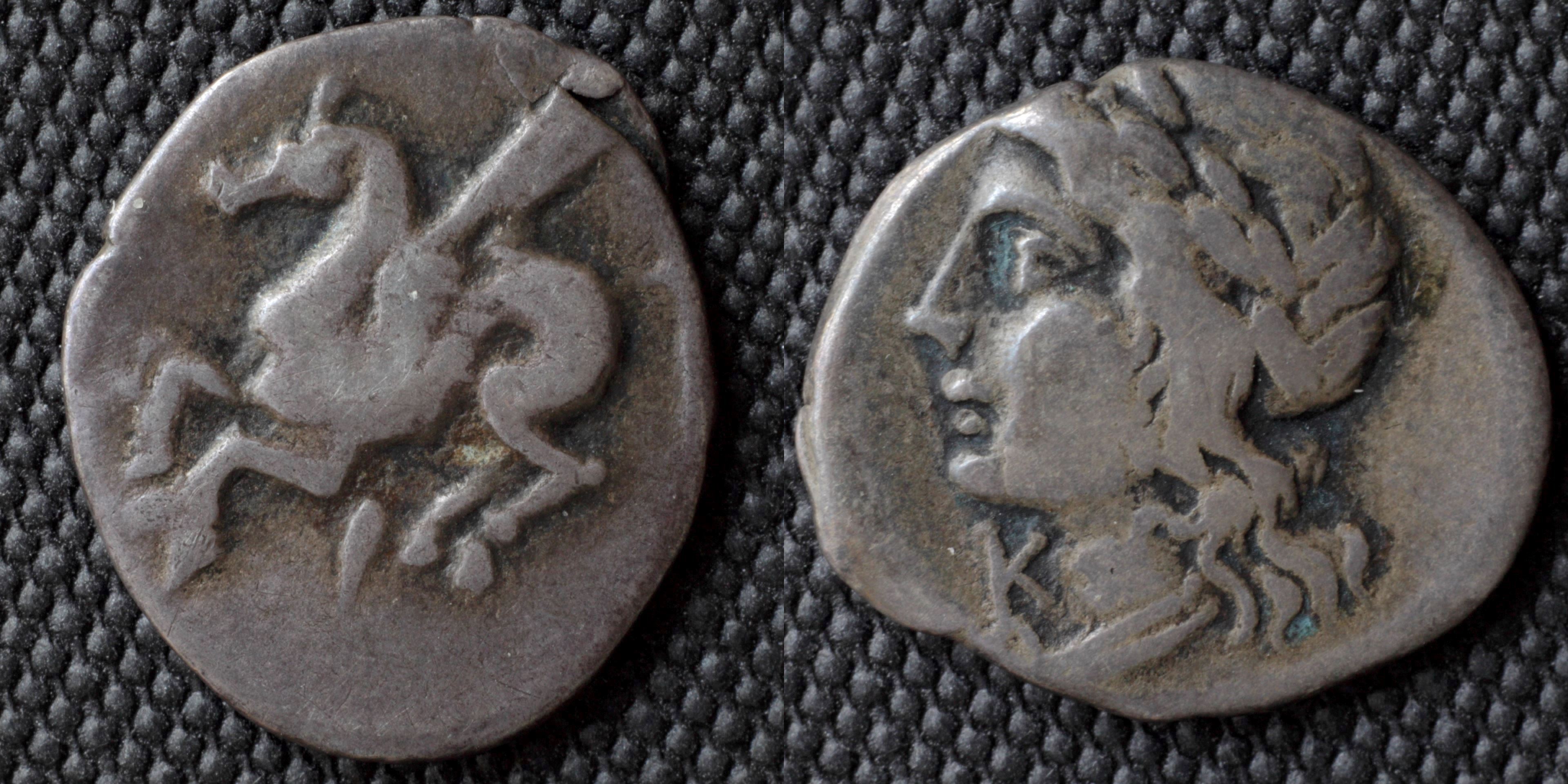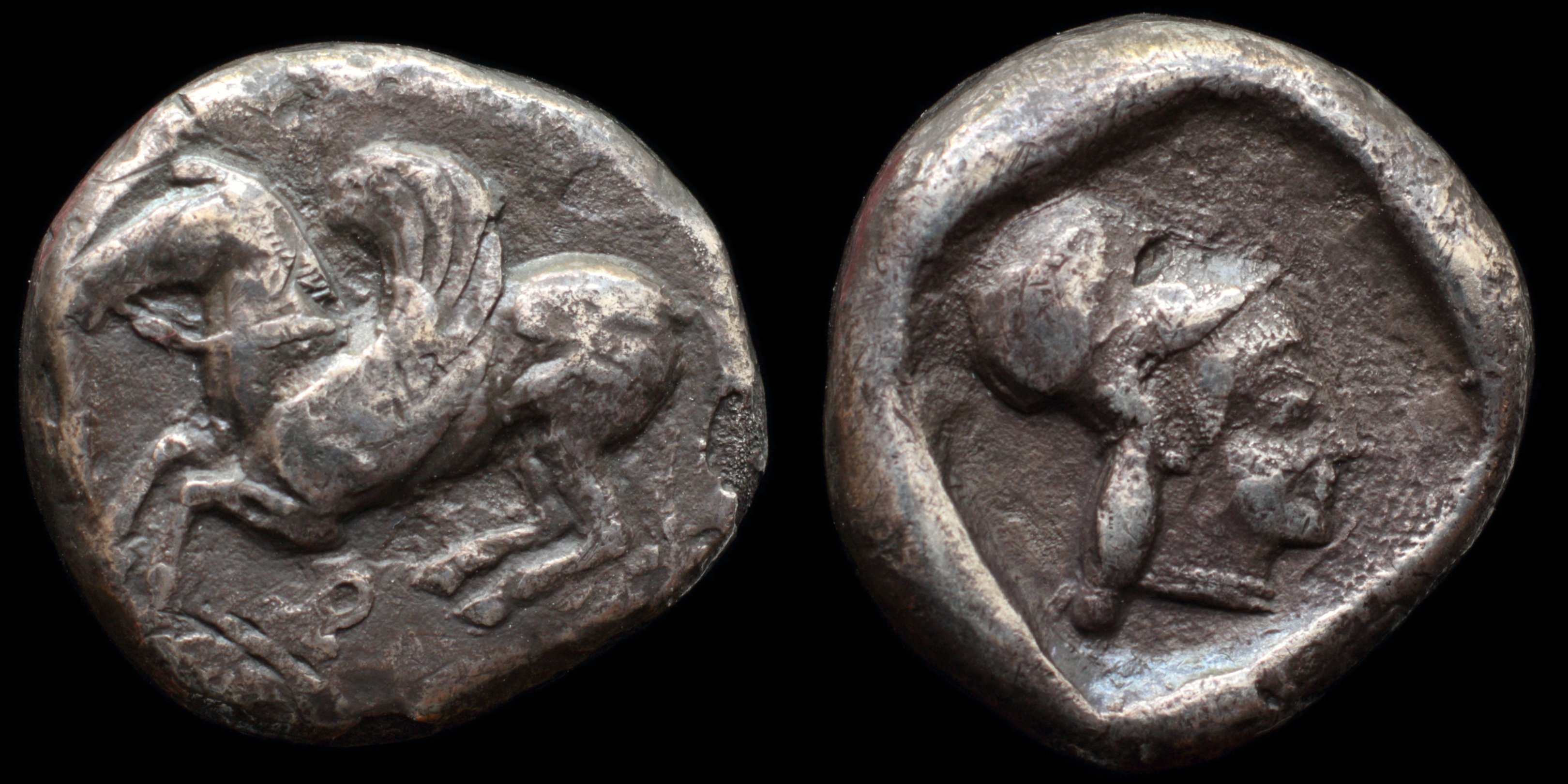Korinthos was a city-state on the Isthmus of Corinth, the narrow stretch of land that joins the Peloponnese to the mainland of Greece, roughly halfway between Athens and Sparta.
Ancient Corinth was one of the largest and most important cities of Greece, with a population of 90,000 in 400 BC. In classical times, Corinth rivaled Athens and Thebes in wealth, based on the Isthmian traffic and trade. Until the mid-6th century, Corinth was a major exporter of black-figure pottery to city-states around the Greek world, later losing their market to Athenian artisans.
During the Hellenistic period, Corinth, like many other Greece cities, never quite had autonomy. Under the successors of Alexander the Great, Greece was contested ground, and Corinth was occasionally the battleground for contests between the Antigonids, based in Macedonia, and other Hellenistic powers.
The Romans demolished Corinth in 146 BC, built a new city in its place in 44 BC, and later made it the provincial capital of Greece.
Ancient Corinth was one of the largest and most important cities of Greece, with a population of 90,000 in 400 BC. In classical times, Corinth rivaled Athens and Thebes in wealth, based on the Isthmian traffic and trade. Until the mid-6th century, Corinth was a major exporter of black-figure pottery to city-states around the Greek world, later losing their market to Athenian artisans.
During the Hellenistic period, Corinth, like many other Greece cities, never quite had autonomy. Under the successors of Alexander the Great, Greece was contested ground, and Corinth was occasionally the battleground for contests between the Antigonids, based in Macedonia, and other Hellenistic powers.
The Romans demolished Corinth in 146 BC, built a new city in its place in 44 BC, and later made it the provincial capital of Greece.
Modern location: Corinth, Greece
(1)
Korinthos

Obverse: Pegasus left; Ϙ
Reverse: head of Aphrodite or nymph Peirene left; K
Diameter:
14.5 mm
Die Orientation: -
Weight: 1.83 g
Die Orientation: -
Weight: 1.83 g
A very rare variant with only K in left field and no additional letter or monogramm in right field.
Typical weight for this type is around 2,5 g.
SNG Vol: III 2129 Lockett Collection (2,28g) SNG Vol: VIII 879 Blackburn Museum SNG Cop - (cf 148), BMC - (cf 366), BCD - (cf 179)
(2)
Korinthos

Obverse: Pegasos with reins left; Ϙ
Reverse: head of Athena wearing Corinthian helmet and necklace right within incuse square
Diameter:
17.5 mm
Die Orientation: -
Weight: 7.9 g
Die Orientation: -
Weight: 7.9 g
Exemplar der Sammlung Jean-Claude Bourgeois, Auktion Poinsignon, Besançon 26. Mai 2012, Nr. 190.
Ravel 129 var.
